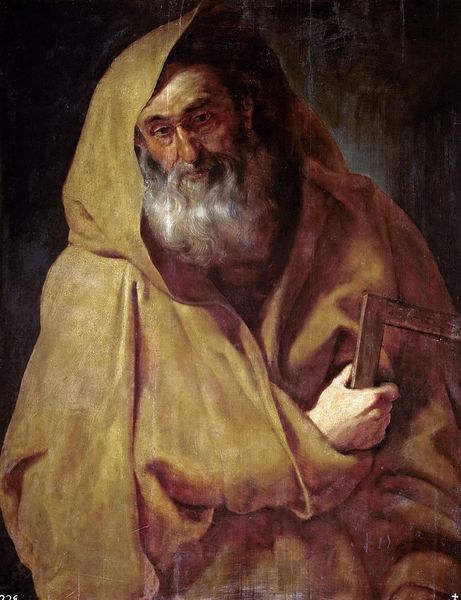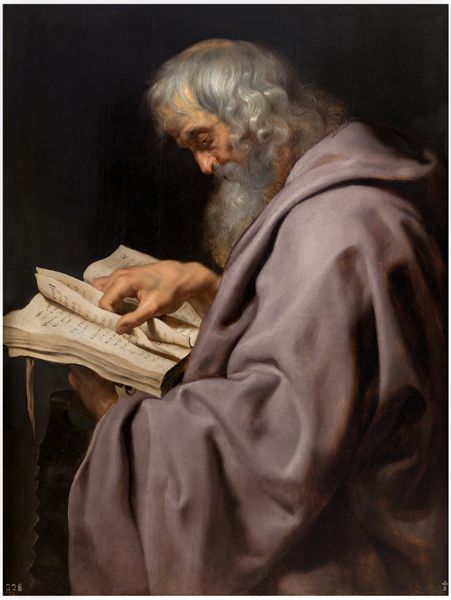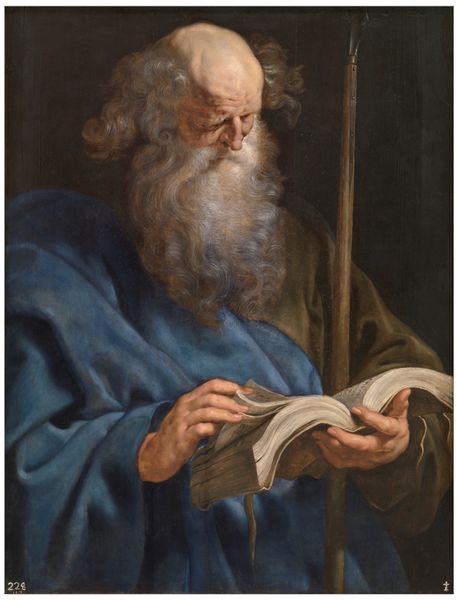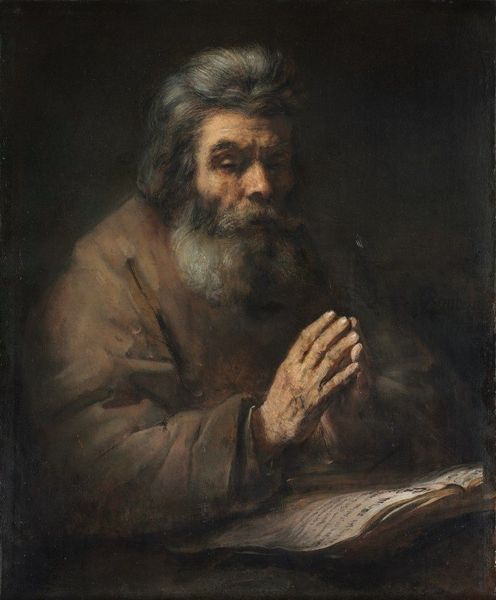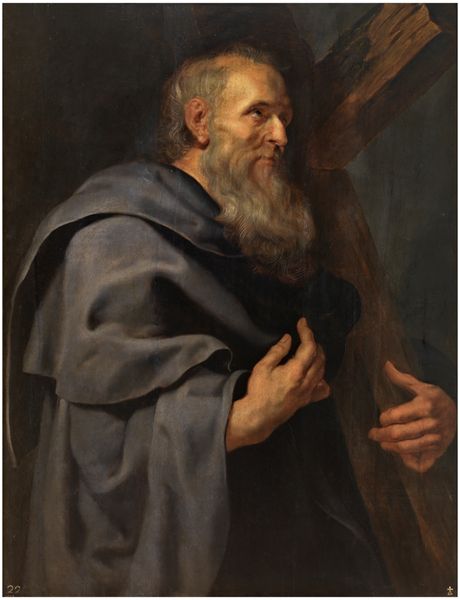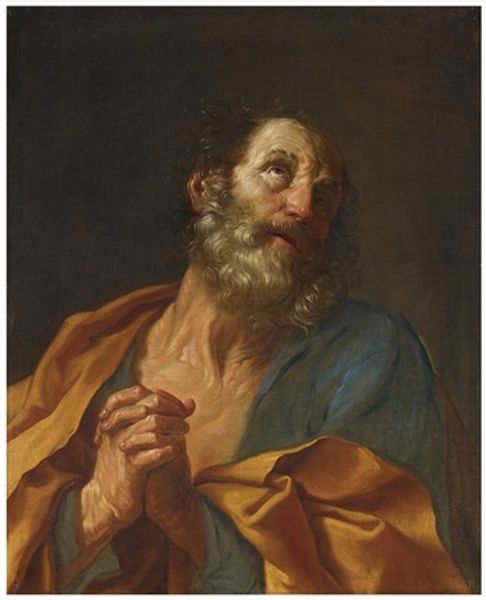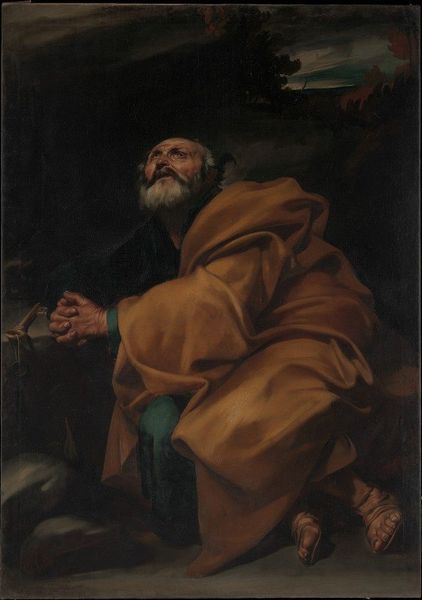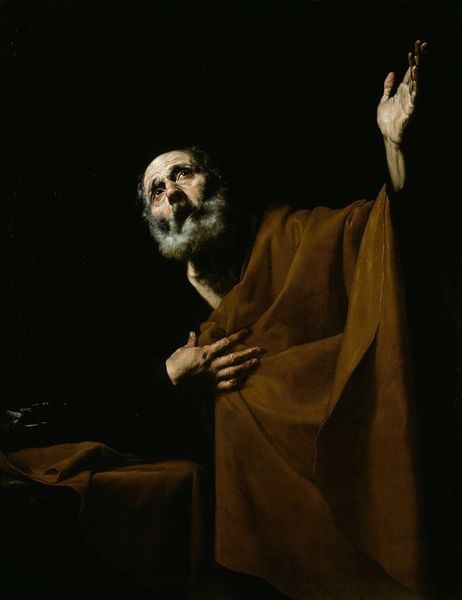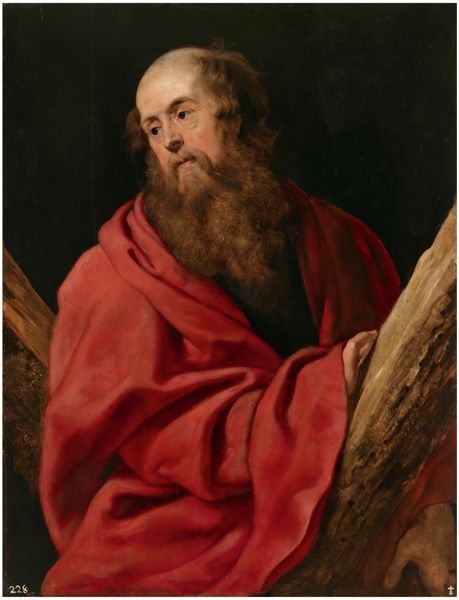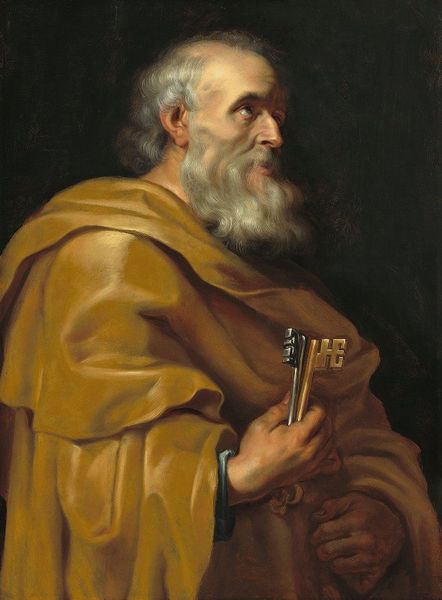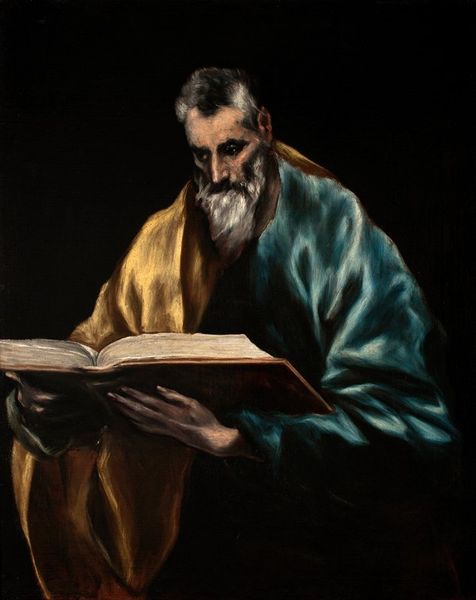
painting, oil-paint
#
portrait
#
baroque
#
painting
#
oil-paint
#
figuration
#
history-painting
#
academic-art
Copyright: Public domain
Curator: Look at this compelling depiction of Saint James the Less, rendered around 1612 by Peter Paul Rubens. What's your initial reaction? Editor: He looks quite weighed down, almost burdened. The deep shadows around his eyes and the way the fabric hangs suggest a man grappling with something heavy. Curator: It’s fascinating how Rubens utilizes color here. The almost monochromatic ochre palette focuses our attention entirely on the play of light and shadow across the figure. Notice how the light models the folds of his garment, creating depth and volume. Editor: It feels less like a saintly portrayal and more like an image of the working class. You know, considering Rubens was often commissioned for very bombastic historical paintings, a figure like this humanizes that artistic world for the masses. He seems like he is being defined by what he did in life. Curator: Precisely, observe how the square he holds alludes to Saint James's role as a builder. His attributes were tied directly to his earthly vocation. The geometrical symbolism brings balance between what is shown versus implied by it, providing both realism and idealism to it. Editor: And the somewhat subdued background is critical; a darker stage provides just the right conditions for the story behind the character to emerge, like a spotlight on social commentary about the religious working class during that time. Curator: This painting certainly provides insight into the evolving patronage trends. Rubens adapted classical idealism to fit new modes of religious interpretation within an ever-changing Europe. It shows that art could both glorify religious subjects and portray them with palpable human characteristics. Editor: I like how the piece transcends that classic painting approach; through a more modern lens, his portrait highlights a critical intersection—bridging lived religious realities to the people on Earth. Curator: Reflecting on this, it shows just how deeply Rubens understood both artistic expression and the era's evolving social narratives, as displayed through his craft. Editor: Agreed, looking at Saint James this way allows for broader cultural narratives—effectively linking individual portraiture, the artist, and how art was experienced within the historical narrative of Europe itself.
Comments
No comments
Be the first to comment and join the conversation on the ultimate creative platform.
